More details ...
I think that the best idea now is to show you my sketch of the new layout. Some small corrections have been made, but all in all it will look something like this:
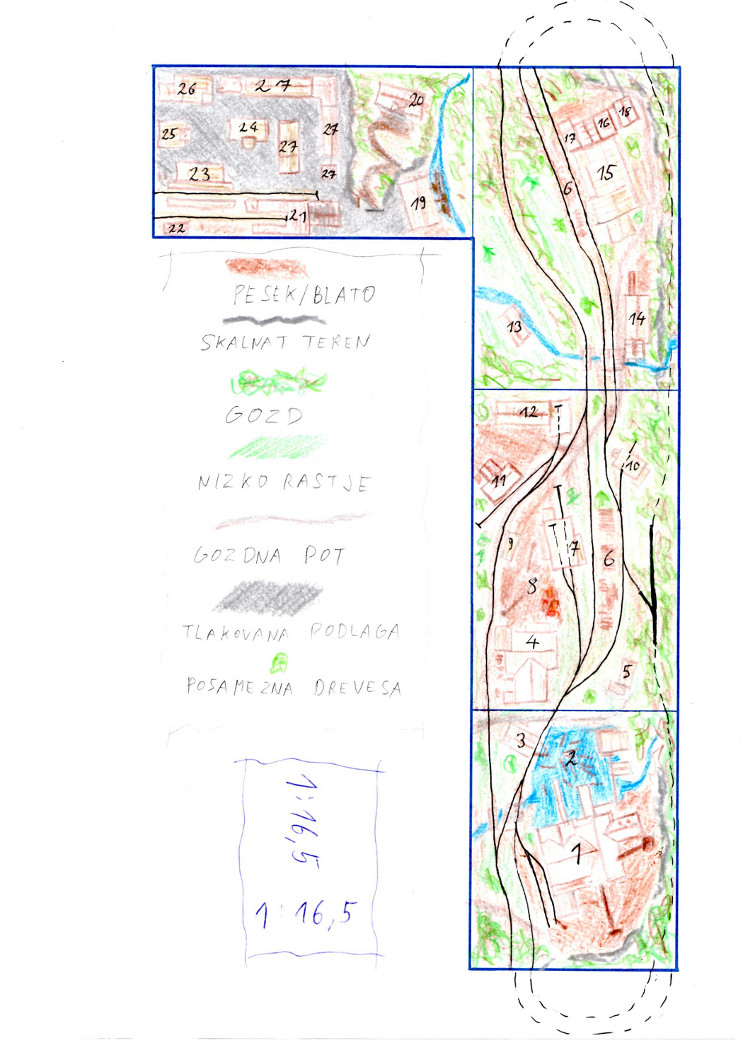
If you're interested, here is everything explained by the numbers you see up there:
1. Big sawmill (Sierra West Twin Mills kit). This complex will take over the whole module. Sawmill will include 2 slopes for log hauling and visible machinery (more than it's included in the kit)
2. Lake, about 3 cm deep, filled with logs
3. Steam log unloader
4. Big machine shop with belt driven machines. Basic kit will be SW kit, but will be twice as big and with different machinery (Rio Grande, Scale Structures etc.). Machine shop will be driven by 2 steam machines and will include mostly metal processing machines
5. Small logging hut (scratchbuilt)
6. Logs
7. Small machine shop with belt driven machinery. Everything will be driven by one steam engine. Mostly wood processing machinery will be held here
8. Constructing yard, where logging machinery will be assembled
9. Small saw
10. Boiler house
11. Small house for loggers (part of SW kit)
12. Repair shed. Mostly for locomotives and traction engines (scratchbuilt)
13. Venetian sawmill, water driven, it was very common in my country Slovenia and this part of Europe (http://www.tms.si/index.php?m_id=venecijanka&lang=2) (scratchbuilt)
14. Water driven sawmill. Machinery will be belt driven from waterwheel (scratchbuilt)
15. Big steam driven sawmill (scratchbuilt)
16. Unloading deck for logging cableway
17. Unloading deck for logs brought by traction engines
18. Valley station of the 2 roped gravitational cableway (telpher line) . Model will be based on our Golobar cableway (http://kraji.eu/slovenija/zicnica_golobar/eng). It's valley station can still be visible as a museum piece near Bovec, Slovenia (scratchbuilt)
19. Blacksmith workshop driven by 3 waterwheels. Interior will be based on a real structure, that's on displey in Technical museum of Slovenia (scratchbuilt)
20. Gothic house (Grimm's funeral home, Downtown Deco). I'll add some details to it
21. Warehouse (Chippy Hollow Hardware, FSM)
And Victorian era town:
22. Signal tower
23. Railroad station
24. Post office
25. Fire station
26. Town hall
27. Several different buildings from Vollmer, Kibri and Faller that will fit in this era
I must say that every machine will be visible without having to remove the roof...
After about 2 months, layout was dismantled. Leftovers:
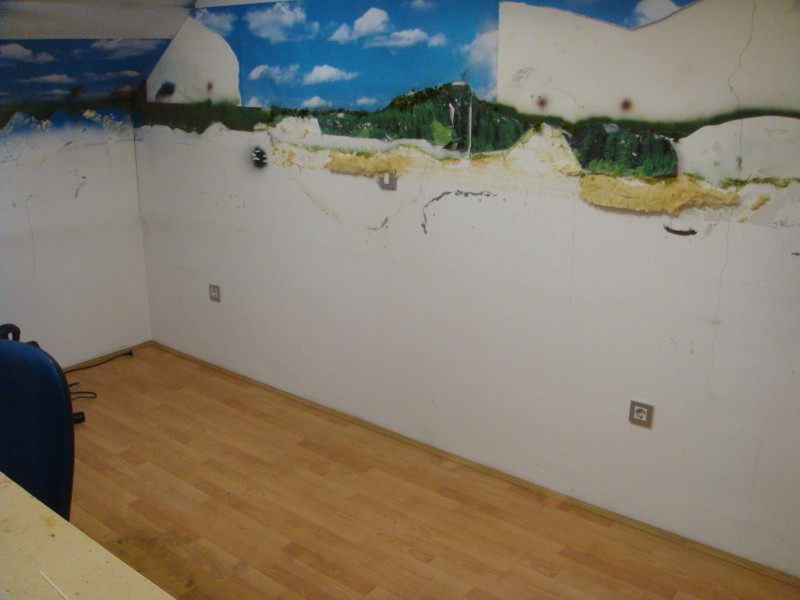
You can see what I meant under ''BUILT INTO THE ROOM''. Wood was supplied:
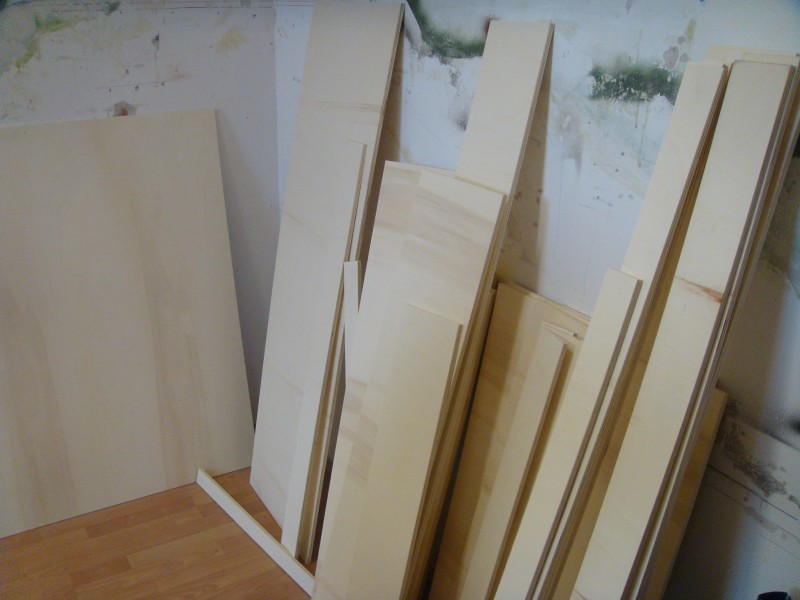
Work begun shortly after:
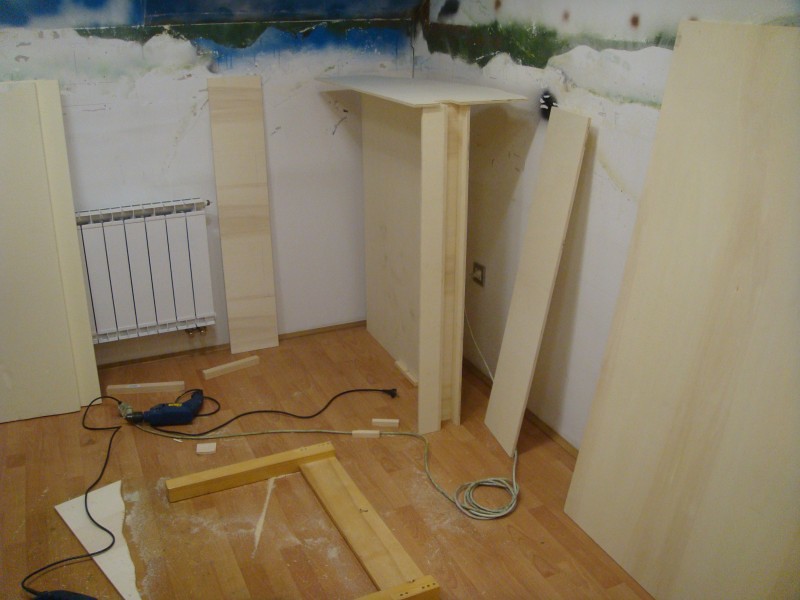

''Tunnel'' on the back of the modules. As you can see, track there will be highly accessible.
First module from behind:
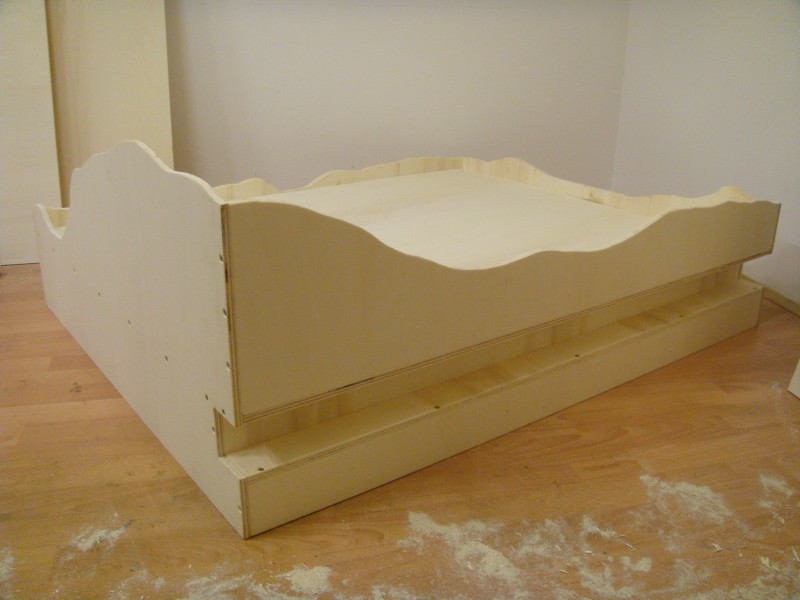
Fourth module, for Victorian city:
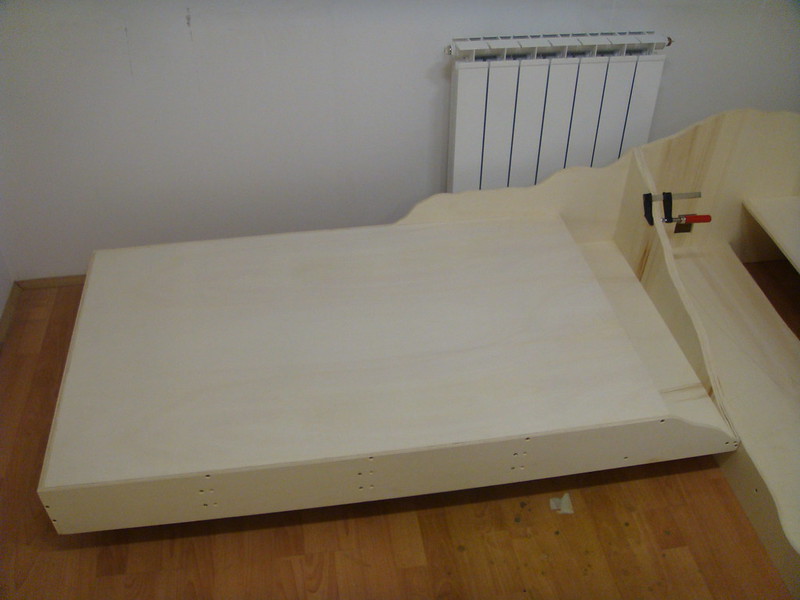
Wooden framework:

Everything together:

Back sides of the straight three models were different back then, because track along backside of the modules were not yet planned. Later I added it, because I have to have 2 main lines instead of only one (through backside tunnels).
First module after some finishing touches:
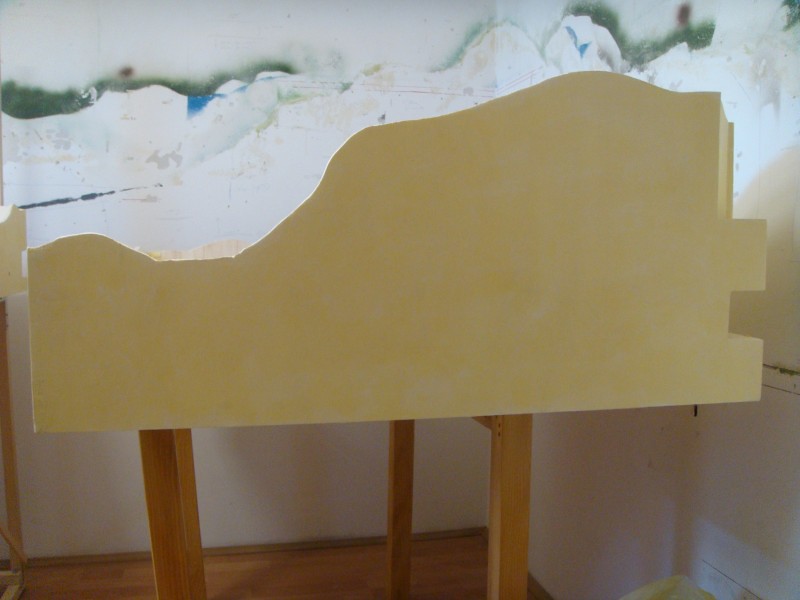
Part of the wood on the right side is cut out, due to background which will later be added. I don't want 90 degree corners on it.
I decided to paint it bordo red, with black framework. Here are a bit altered backsides of modules already painted:
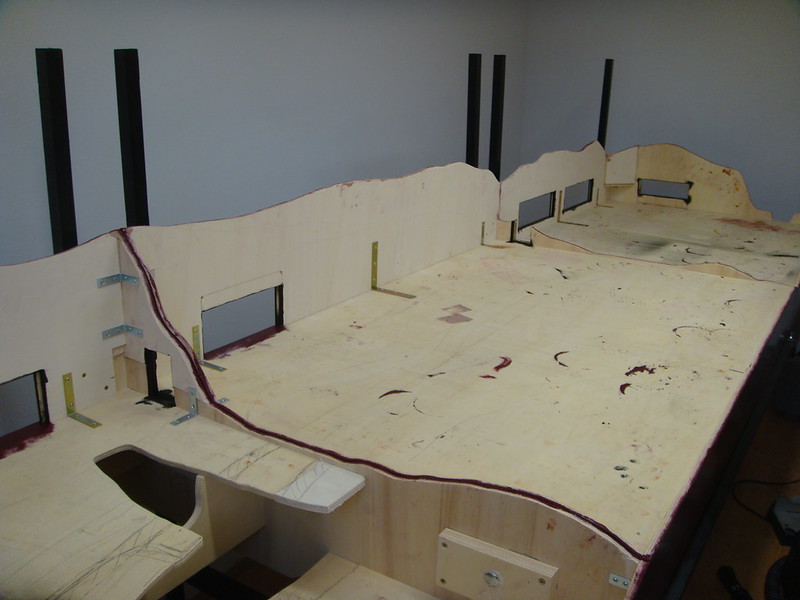
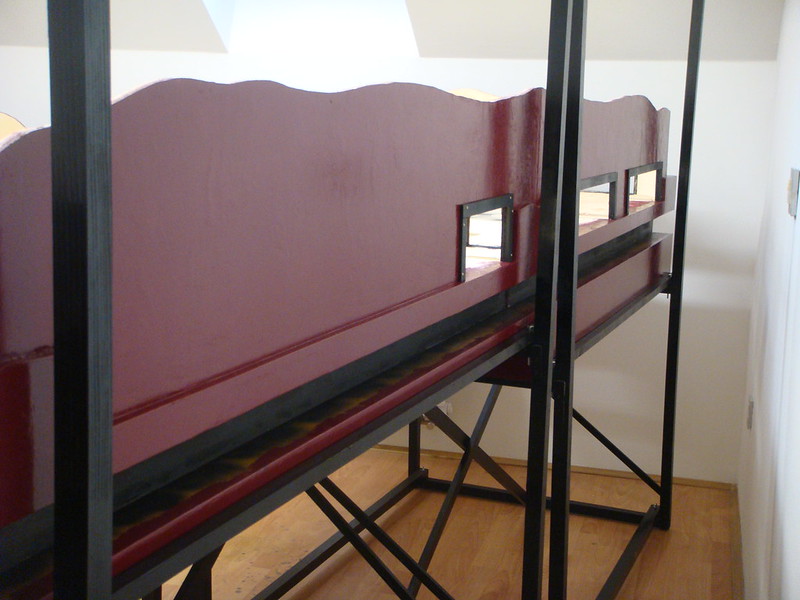
You can see openings for easier access to the track along backside of modules.
Back of module 1:
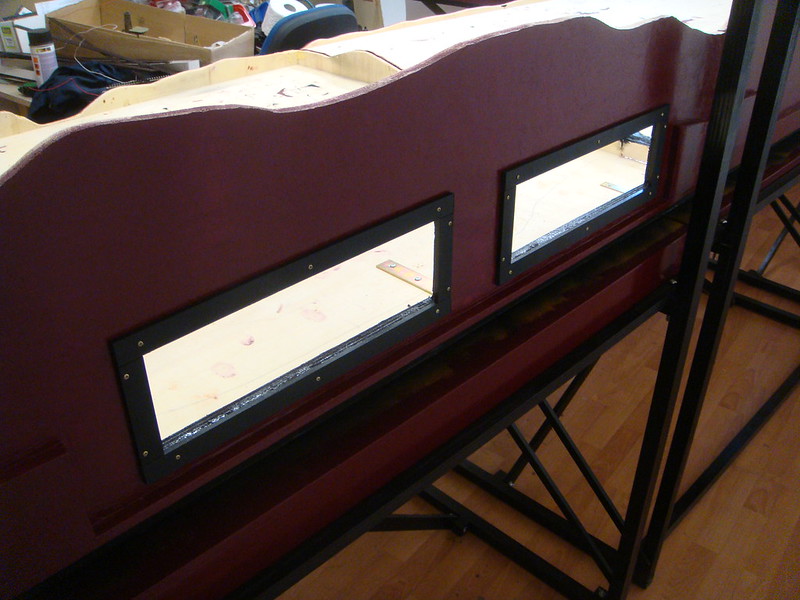
Openings for first main line are above, tunnel for second main line is bellow.
Module 1 from the front side:

Connection:
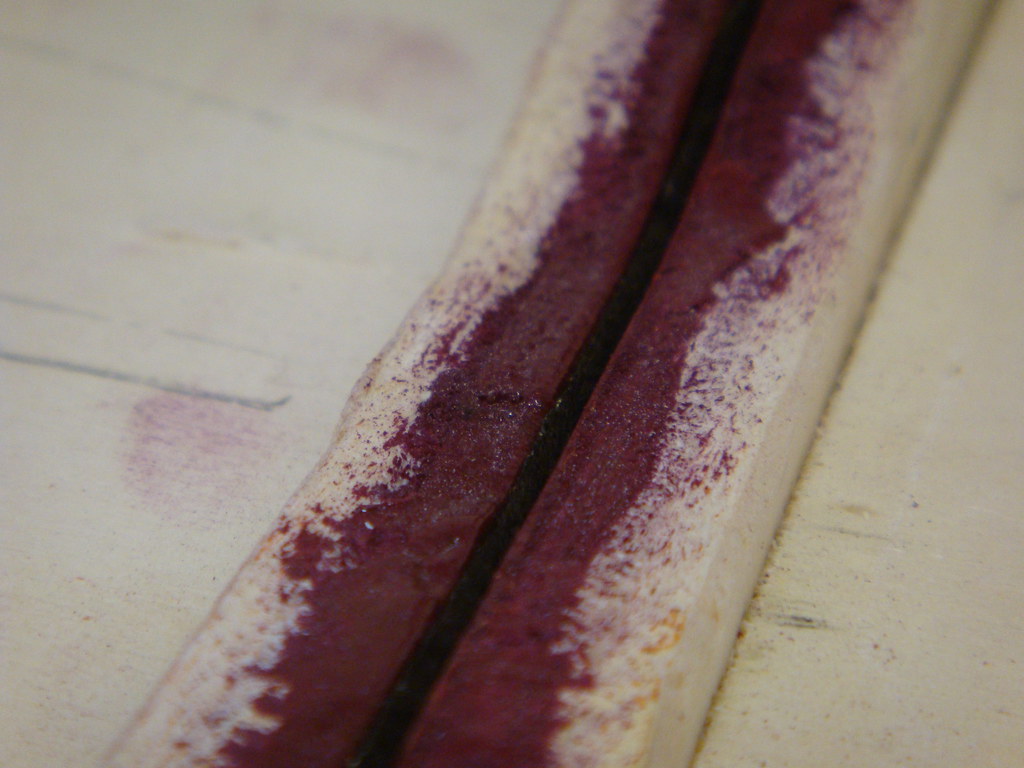
That's it for now :D
I'm almost done with track laying and wiring, so another update follows shortly 
As always, any comments/questions are very welcome...
Best regards, Nejc